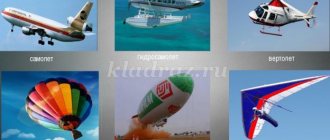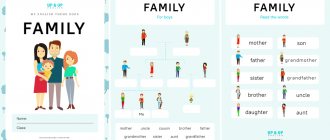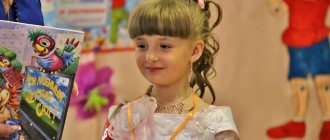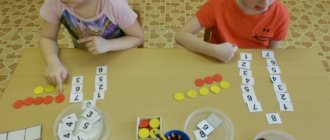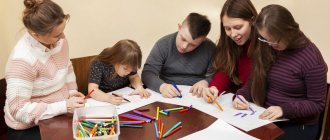Short-term project “I am a man” in the senior group
When we are tired, our body needs more blood, then the heart beats faster to encourage the blood to move faster. And when we are calm or resting, less energy is required, the heart can also rest and beat more slowly.
Human heart
- a very important organ. It needs to be protected and strengthened. Playing, walking, working outdoors, exercising, skating and skiing, bathing, swimming, morning exercises, walking and running strengthen the heart.
Questions for children: What role does the heart play in the human
? What is his job like? Why is it necessary for the heart to contract and unclench? What carries blood throughout the body?
A conversation about the functions and structure of the nose.
Didactic game “Identify by smell”
.
Riddle: Here is a mountain, and at the mountain
Two deep holes.
The air wanders in these holes,
It comes in and out. (Nose)
.
Educator: What is the nose for? What would happen if there was no nose?
Then consider a schematic representation of the nose. Inside the nose there are two channels - the nasal cavity. Which passes into the nasopharynx, connecting to the throat, mouth, and ears. Inside the nose there are villi and mucus that clear the incoming air of dust. As the air passes through the nasal passages, it warms up. The olfactory cells are located in the upper part of the nasal cavity. When the nose (for example, with a runny nose)
clogged with mucus or the membranes of the nose are swollen, odors are not felt. It is useful for the nose to regularly clear it of its contents, it is useful to breathe clean and fresh air, so you need to ventilate the room more often and walk in the fresh air.
Didactic game “Identify by smell”
.
Children with their eyes closed identify lemon, dill, garlic, perfume, etc.
A conversation about the meaning and structure of the ears.
"Call Me" Experience
.
Riddle: “The little animal has it on the top of its head, but we have it below the eyes”
(Ears)
.
The teacher gives several commands: come up, sit on the chairs, etc. Ask the children why they performed these actions (heard the command, which helped them hear the name of the actions (ears, what ears are needed for (hear the approach of danger, car horn, growl) beast, etc.; hear the speech of other people and communicate with them; hear music and sounds of nature: rustling leaves, gurgling water, etc.) invite children to choose pictures with the correct image of ears. Ask why other pictures are incorrect. Conclusion: in humans
one ear on the right and left side of the head so that you can hear on both sides. Invite the children to think about what would happen if there were no ears, if the ear was only on one side.
The diagram shows the structure of the ear. Each ear consists of three parts: the outer ear, the middle ear and the inner ear. Human ears
are not connected to each other.
But there is a connection between the ear and the throat and nose through the auditory tube, so when one of them starts to hurt, for example the throat or ear, even one doctor treats them. Children explain what can be harmful to the ears (loud sounds, objects getting into the ears, dirt, etc.)
; useful (regularly wash and clean your ears, protect them from cold and from foreign objects).
Conversation “I am a child, I am a person”
Conversation “I am a child, I am a person.”
Goal: to reinforce the idea that a child, like any adult, has his own rights. Introduce children to the basic documents of a person: birth certificate, passport.
- Guys, look, what is this? (children's answers)
That's right, it's a globe. What do you see on it? (children's answers: seas, oceans, countries, etc.). (Consider our continent)
-How great and vast our Motherland is! It is larger than any other country in the world. In no other country do so many different peoples live as in ours. And every minute children are born on earth.
— Do you think a newborn child in Russia, England, Japan and other countries is endowed with rights?
-Who are they for their country? (citizens).
-This means that every person is endowed with rights from birth. Yes, children have rights, but not because he is right. A right is actually something that you are entitled to. Something that no one can or dare take away from you. The ancient sage Yuvekal said: “Childhood should be given the greatest respect.” The Convention on the Rights of the Child is imbued with respect for children. This is a document that states the rights of every person under the age of 18 to fully develop their capabilities in conditions free from hunger and want, cruelty, exploitation and other forms of abuse. But it wasn't always like this. Children had no rights, and infants were even deprived of the main right of every person - the right to life (the ancient state of Sparta). In France, in the old days, children who were in trouble were sold by their parents to beggars. How to protect a child, and what steps has the world community taken in this direction? Documents were adopted that spelled out the rights of the child:
— Declaration of the Rights of the Child;
— UN Convention on the Rights of the Child;
— World Declaration on the Survival, Protection and Development of Children.
(look at the illustrations)
— Humanity has come a long way to understand that children are people too. The child needs special protection and care, including adequate legal protection. In all countries of the world there are children living in extremely difficult conditions, and these children need special attention. Guys, try to list situations where a child finds himself in a difficult situation. (children's answers)
To sum it up:
• Children left without parental care;
• Neglected and homeless children;
• Disabled children;
• Children – forced migrants and refugee children;
• Children are victims of violence;
• Children who find themselves in another difficult life situation that they cannot overcome on their own.
- Now tell me, what rights do children have? (children's answers)
— I suggest you watch a story about children’s rights.
(watch the clip “Declaration of the Rights of the Child”)
-From birth, a child is a citizen of his country, and this is his right. You are citizens of Russia, Russians. Not only your loved ones and family take care of you, but also the state. Our president and other responsible officials of the state are doing everything so that you have a happy childhood. The Convention on the Rights of the Child states that children must have both a name and a nationality.
— Think about why these rights are important? (A person's name distinguishes him from other people)
— When you were born, your parents registered (registered) you, giving your first and last name in a special institution - the registry office. Your parents introduced you to the state as new citizens. With birth, you have the right to care and protection from the state. You have received the first document in your life - a birth certificate. It states that you are citizens of your country, citizens of Russia.
You have a document that distinguishes you from all other children, confirmation that you are not like others, but still you are citizens of Russia. The day you were born has become your holiday, and every year you celebrate it. Can you guess what it's called?
What is a birthday
I will answer without a doubt:
Pie Boxing Day,
Day of smiles and flowers.
(View children's birth certificates)
— When you turn 14 years old, you will receive another important document. This is a passport. (look at your passport)
- Look at these documents. What is the difference? (listen to the children's answers)
“Children are the most precious thing we have.” You were born and from now on you have the right to a happy, cloudless childhood, surrounded by family and friends at home, surrounded by kind people in kindergarten. We must remember this and be proud of it.
Get text

